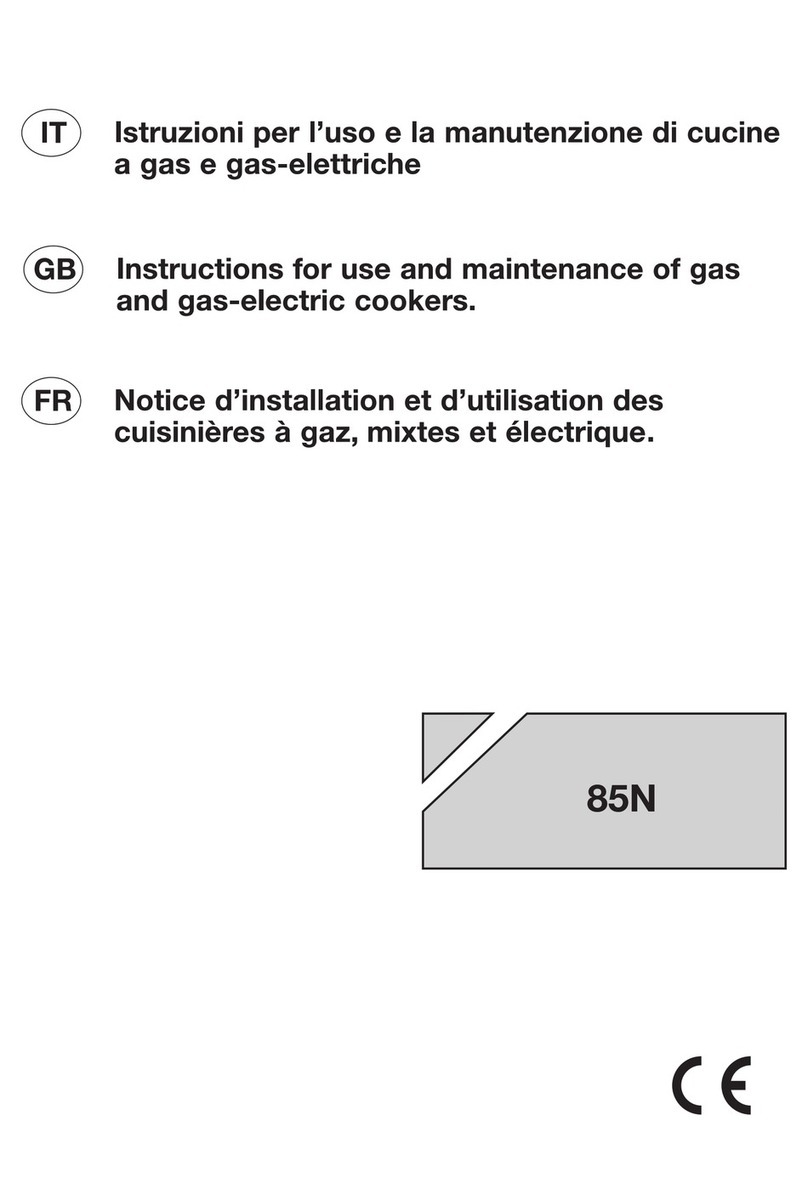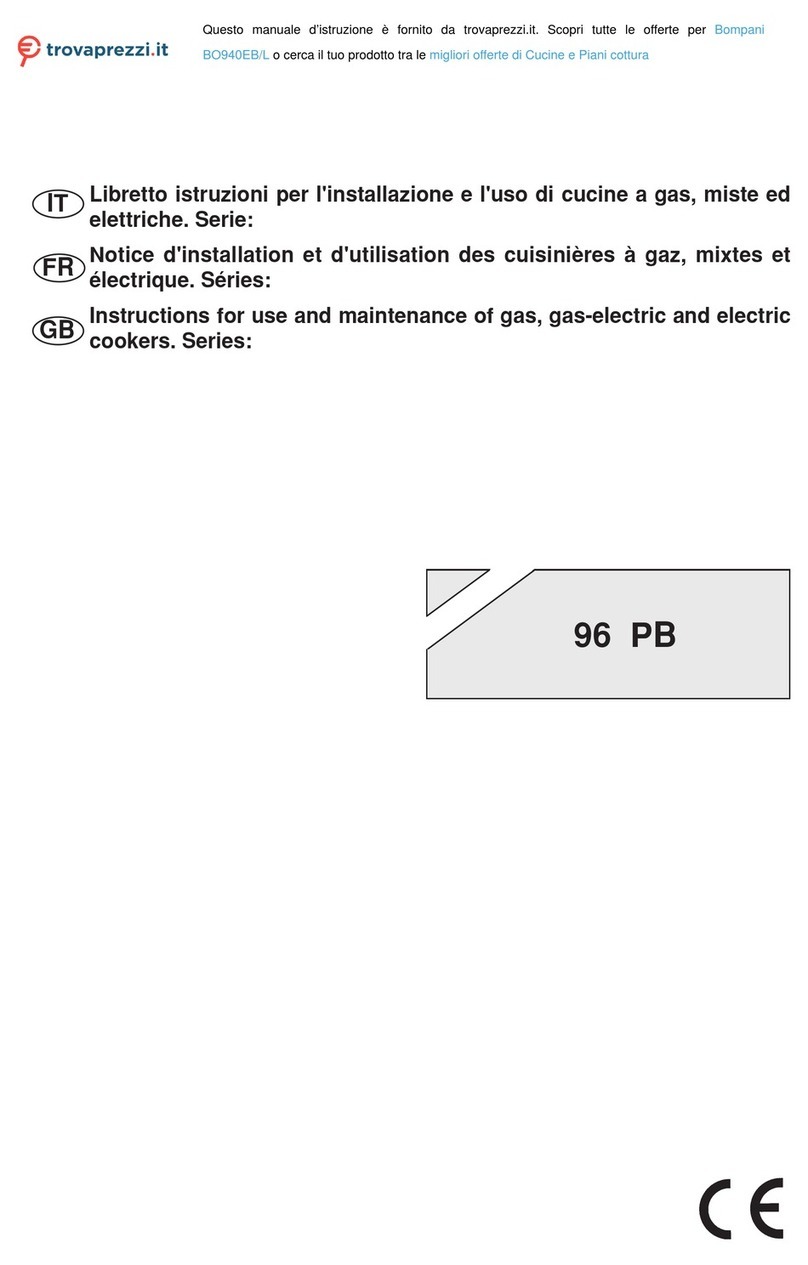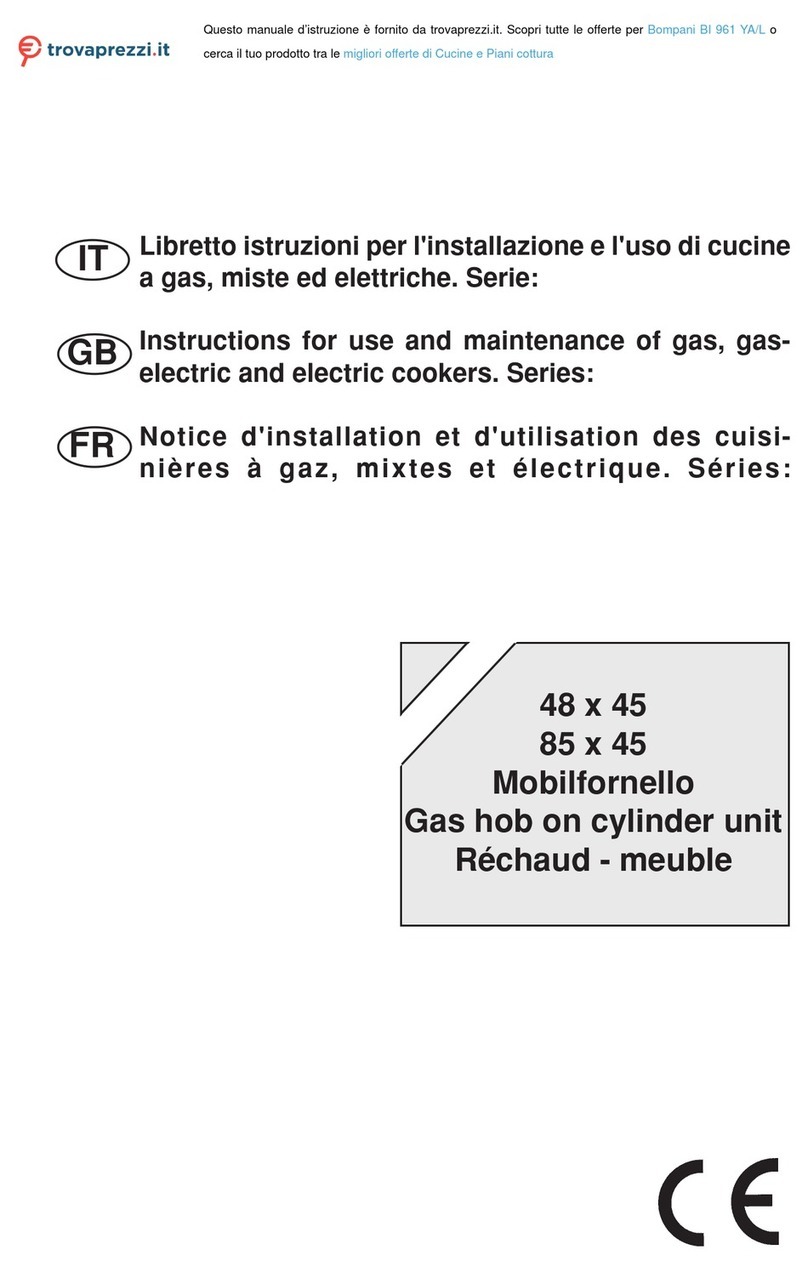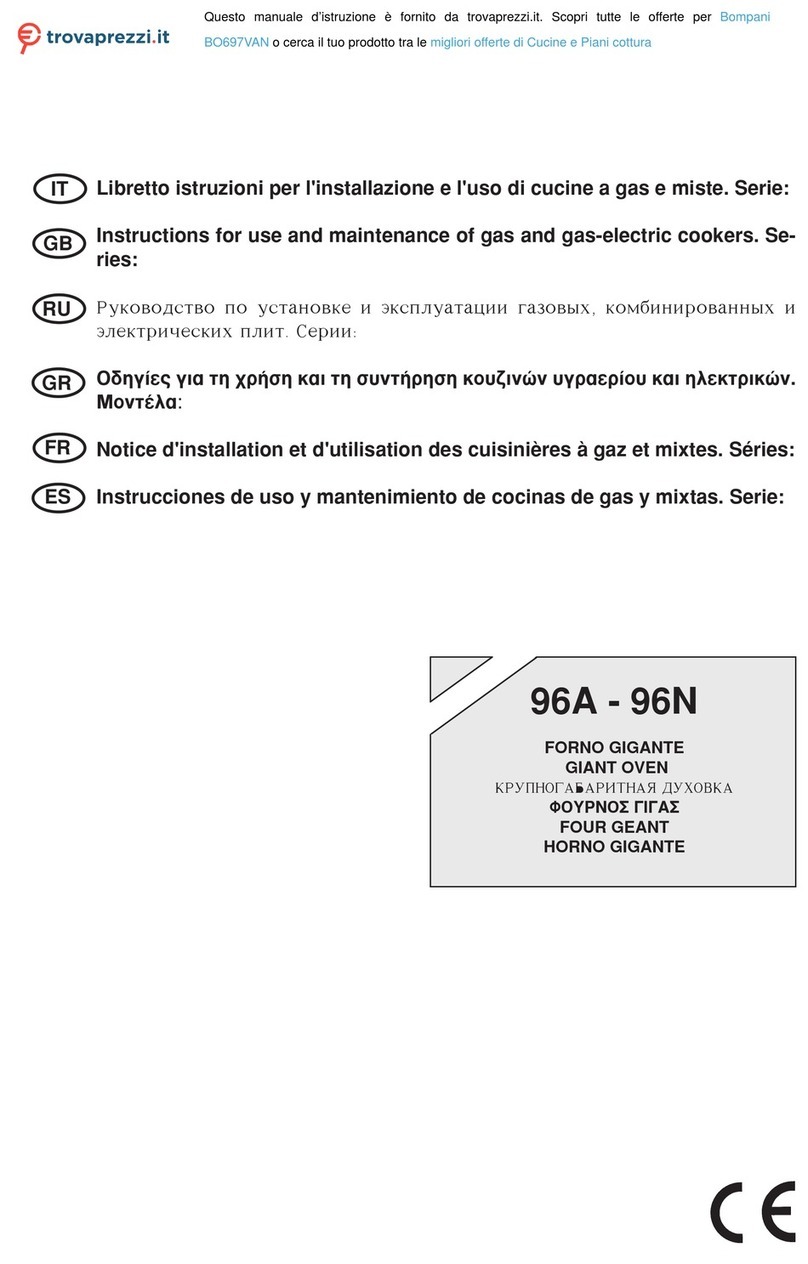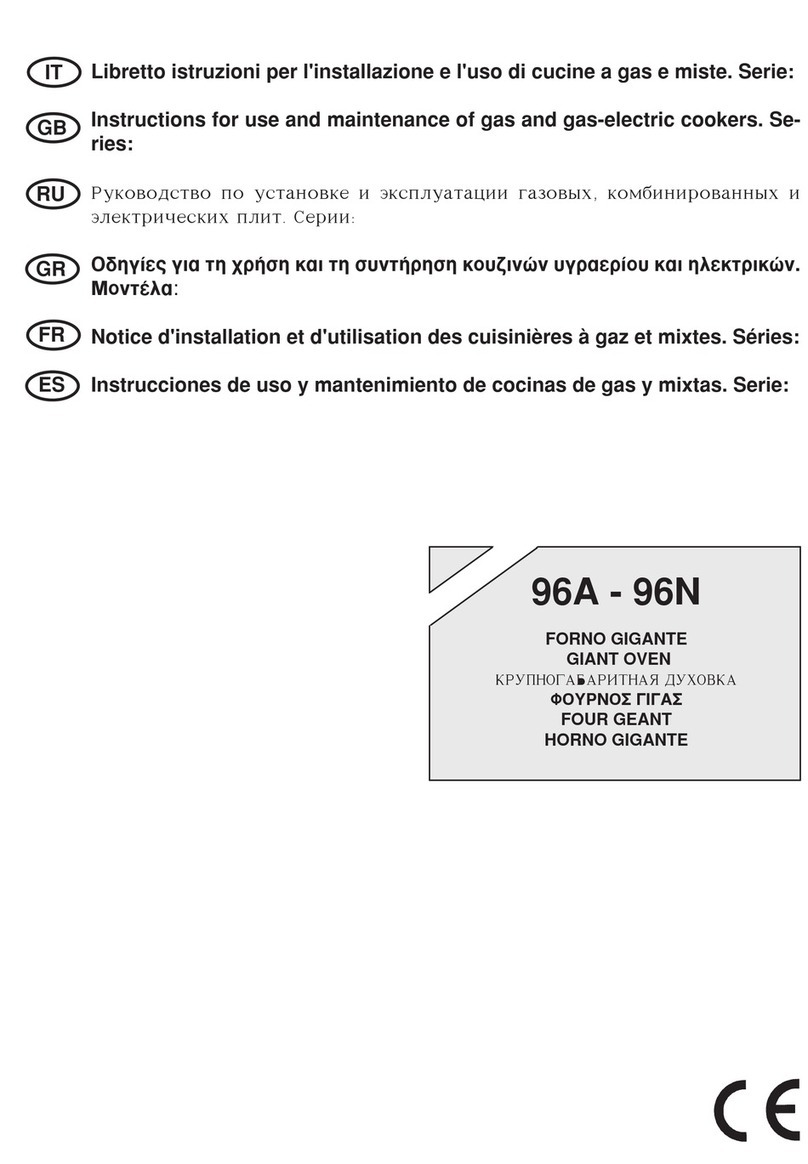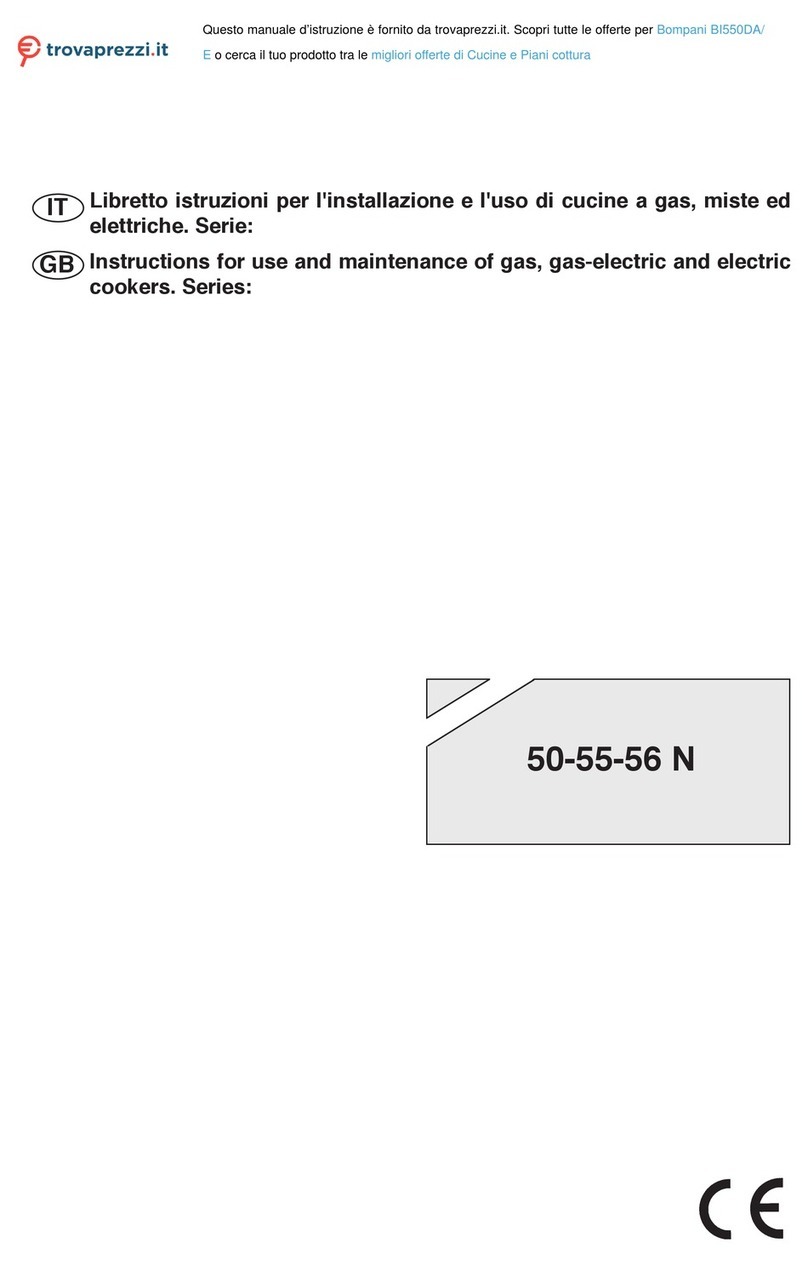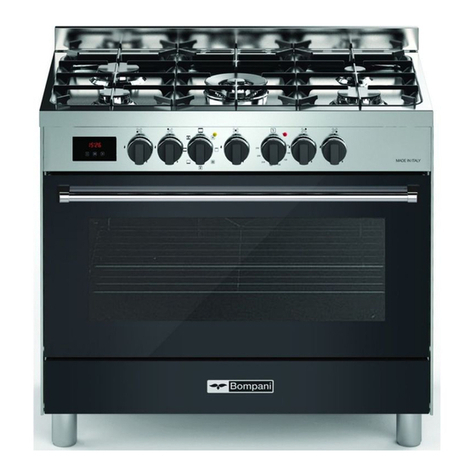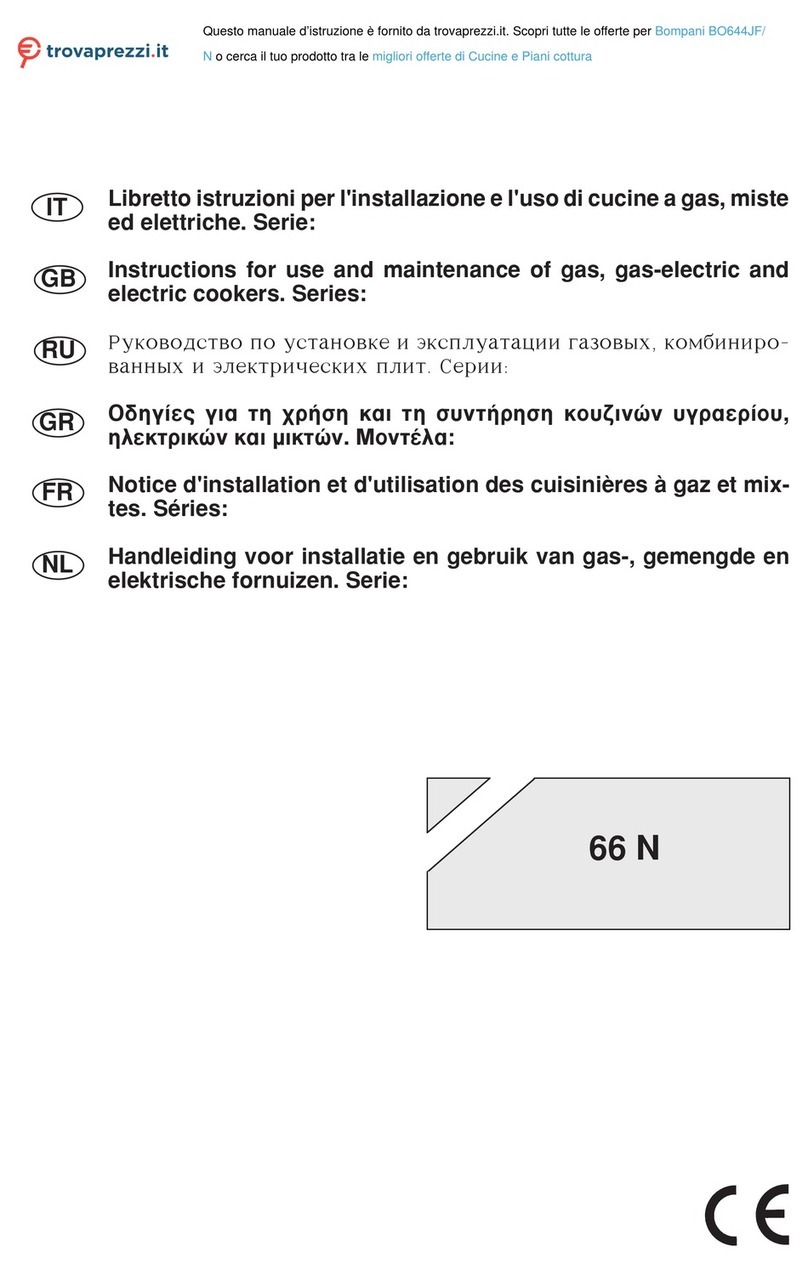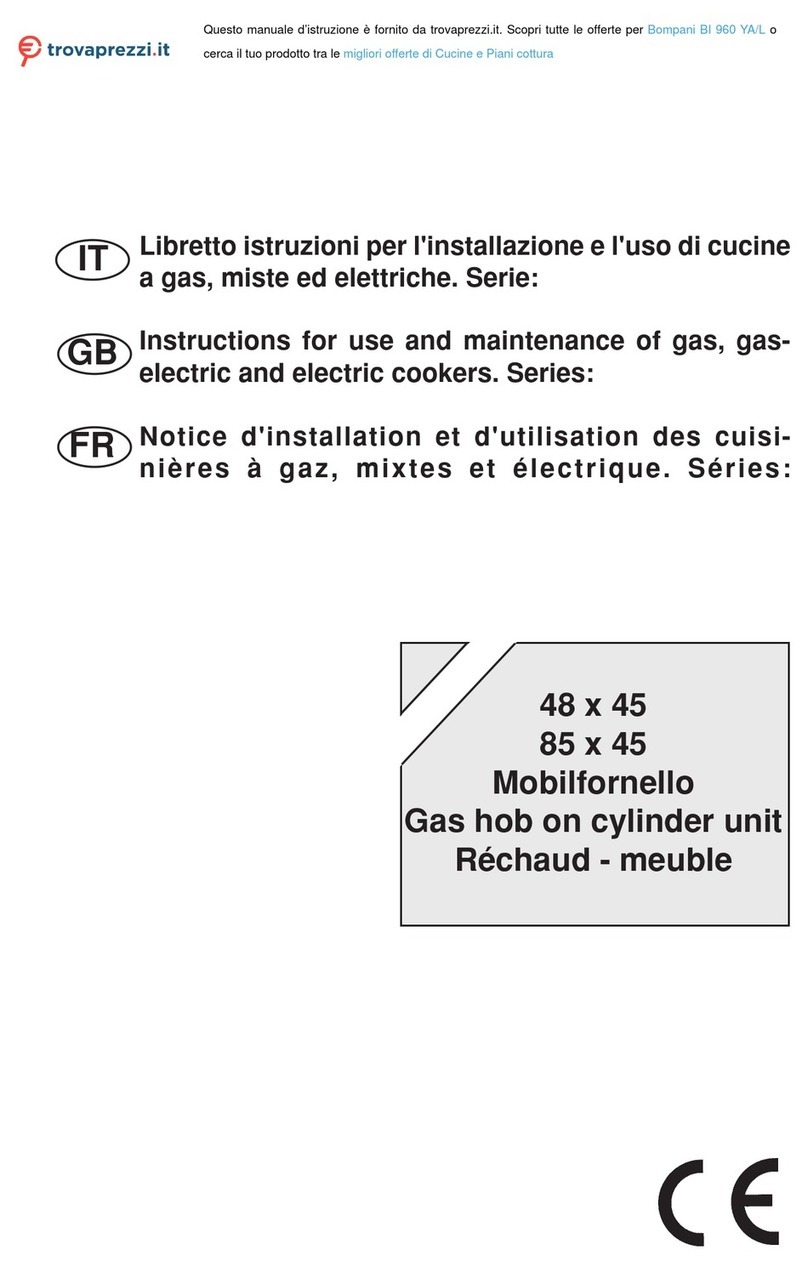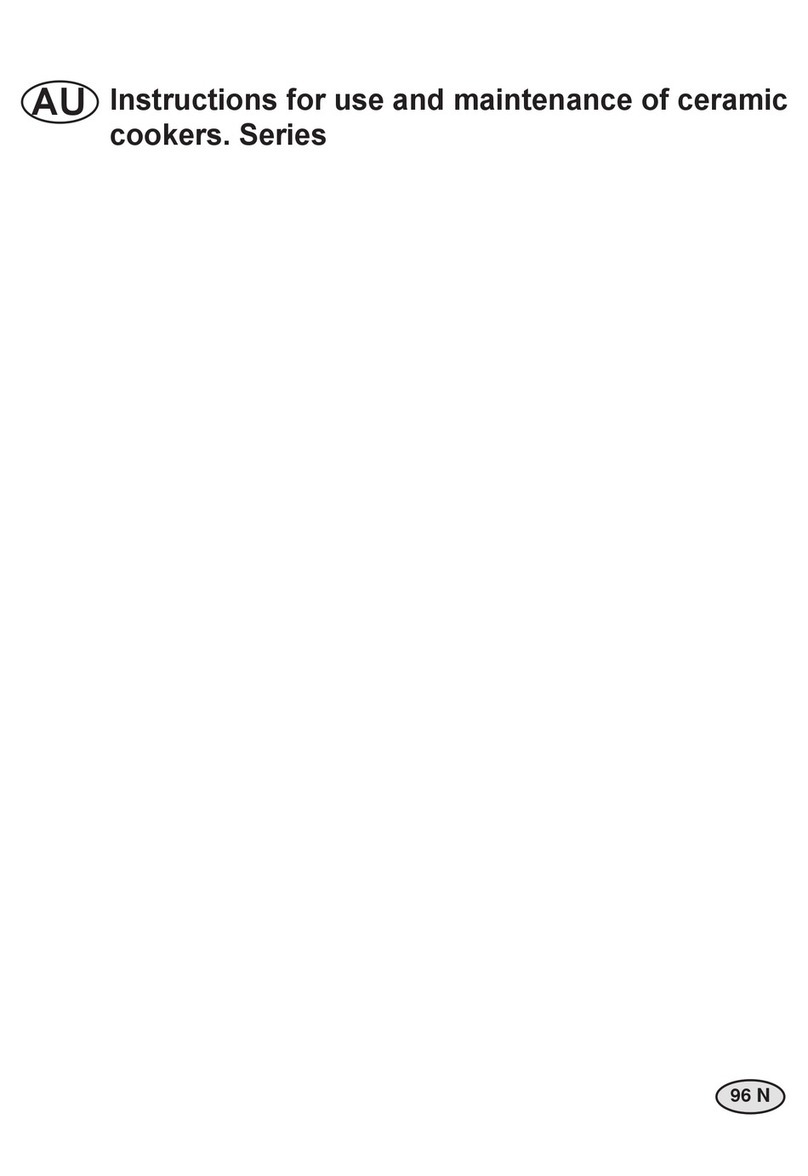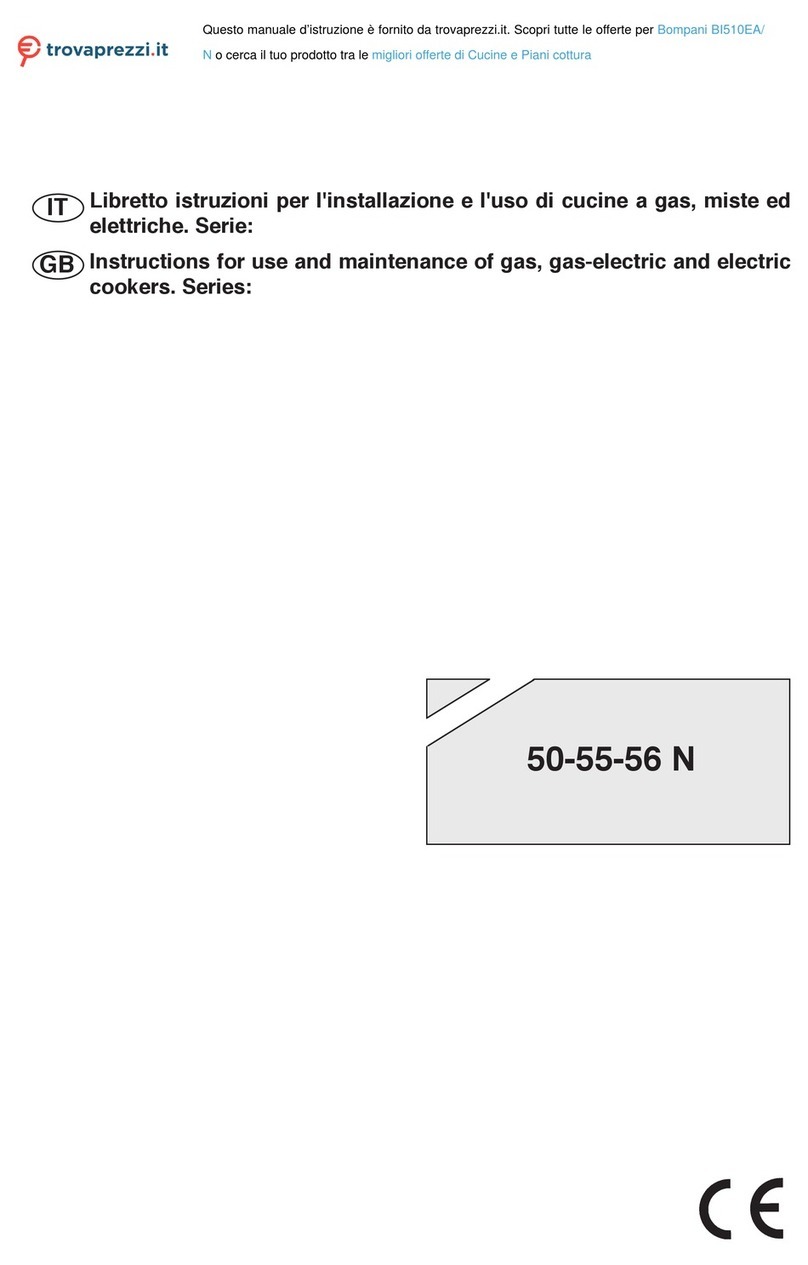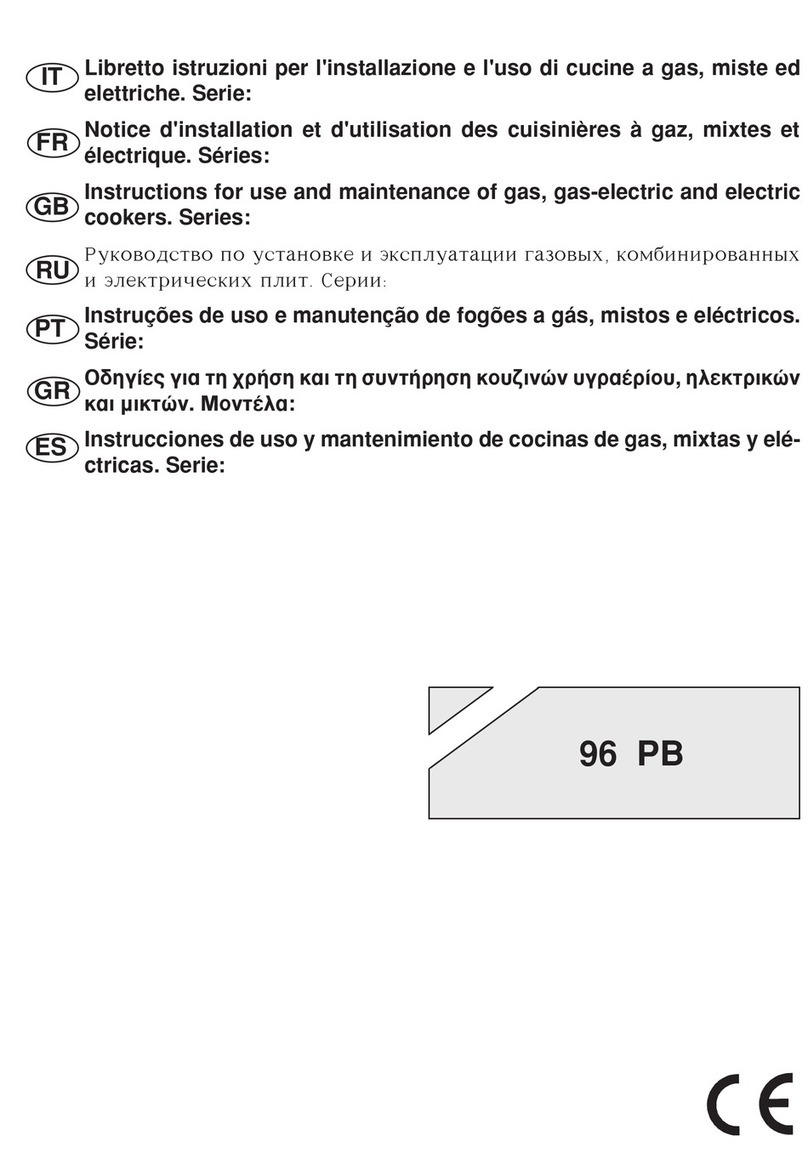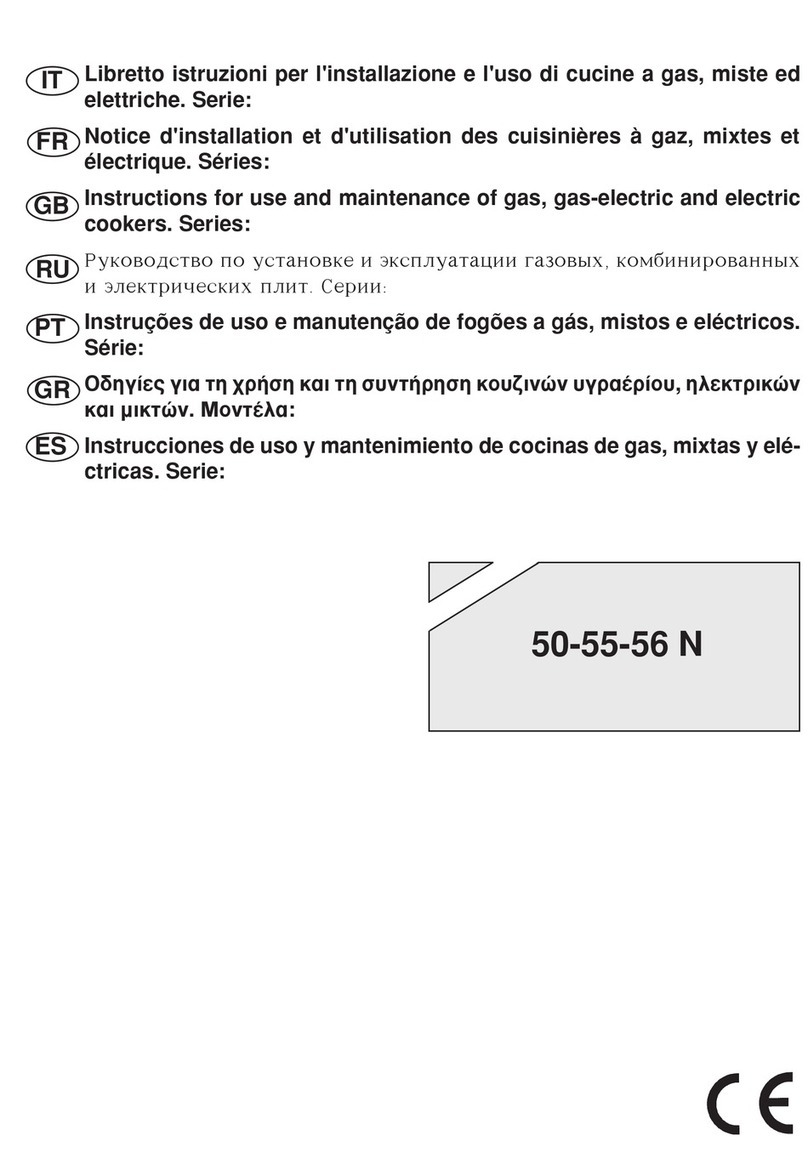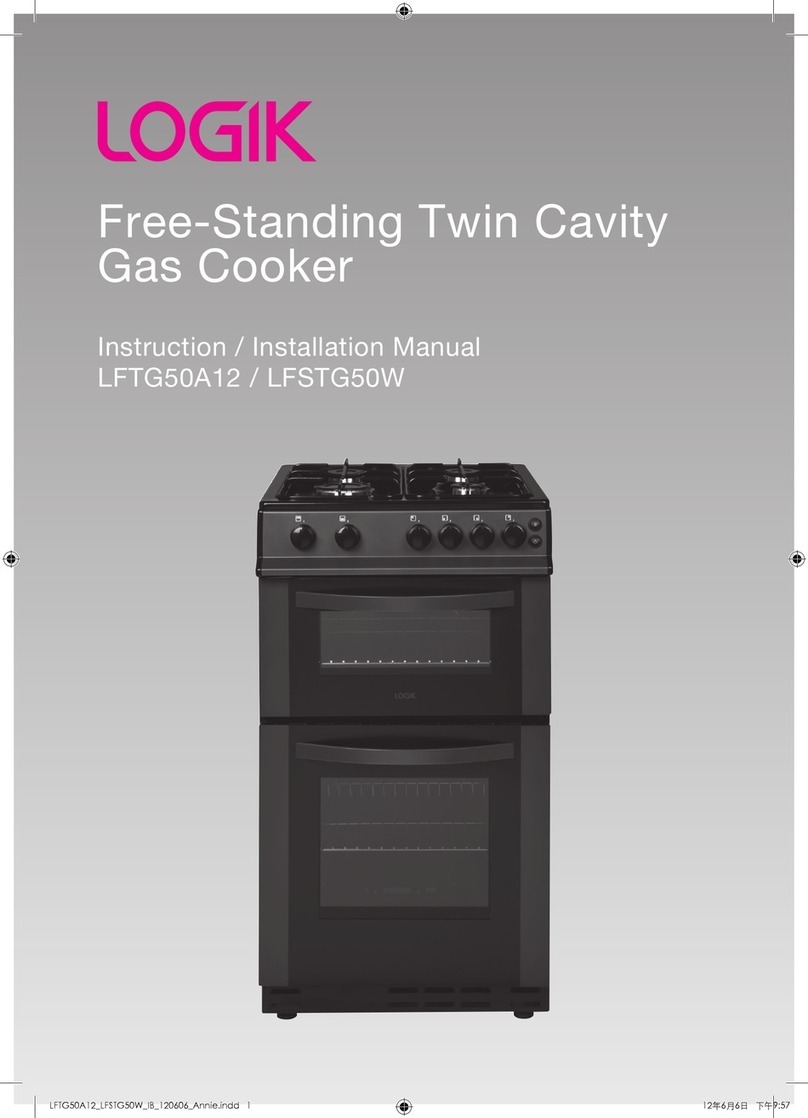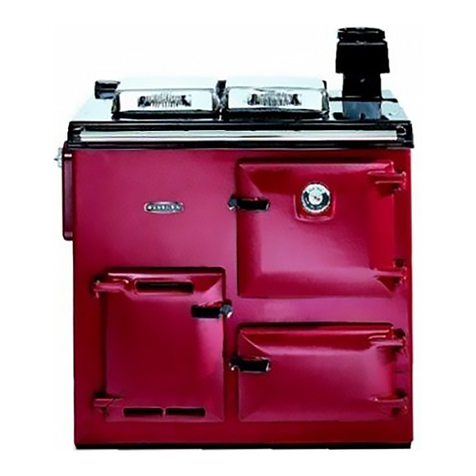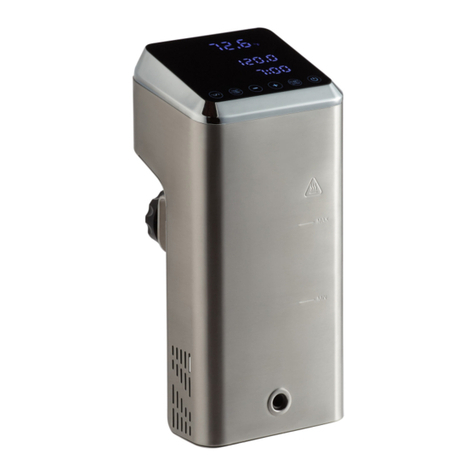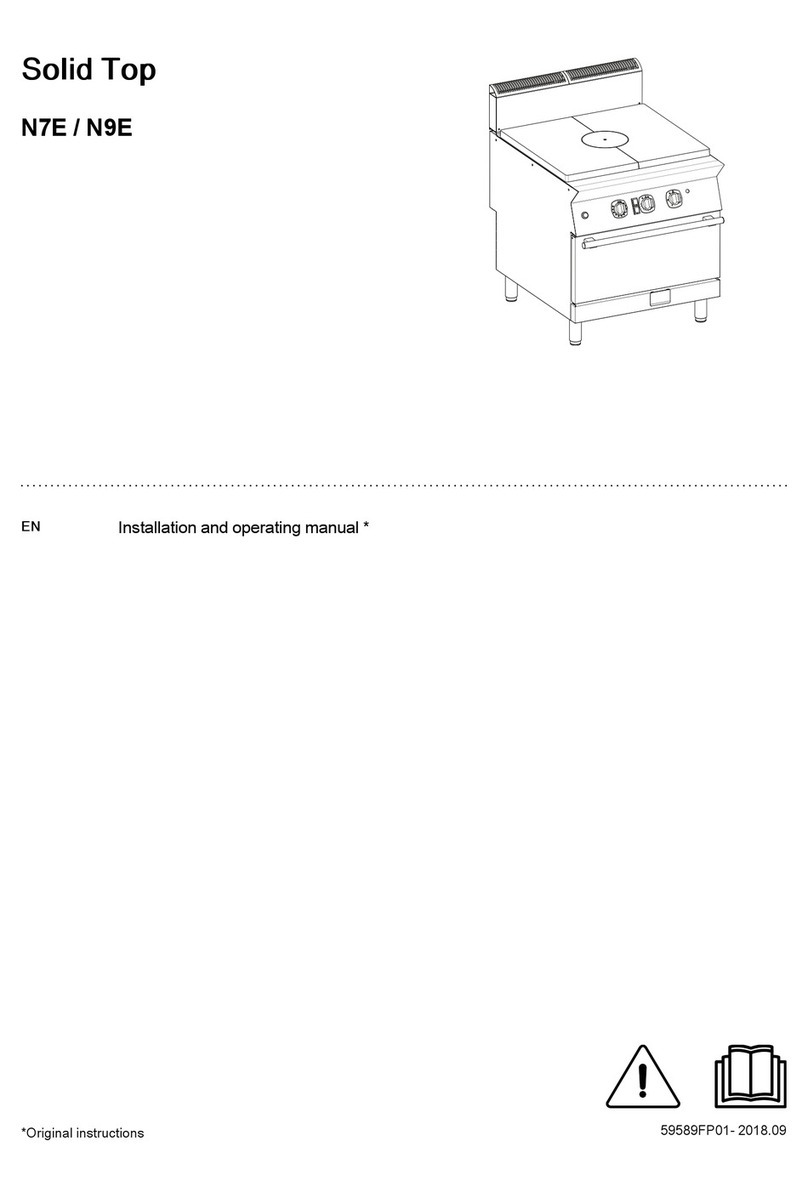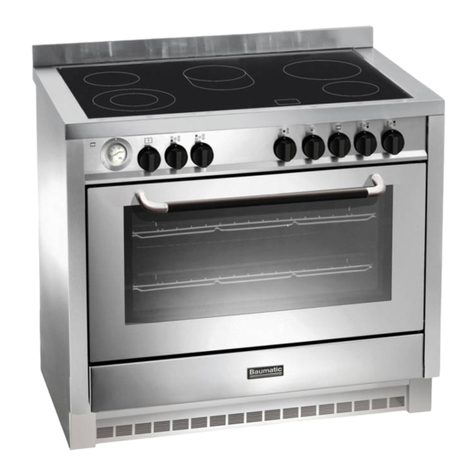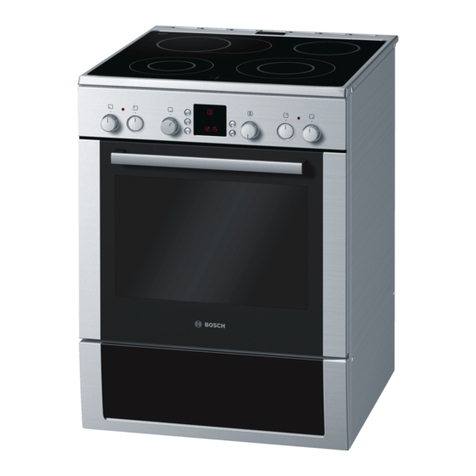
10
- riavvitare molto lentamente il by-pass, senza spingere assialmente il
cacciavite, fino a creare una fiamma apparentemente ridotta di 3/4,
curando tuttavia che sia sufficientemente stabile anche con moderate
correnti d’aria.
ALLACCIAMENTO ALLA RETE ELETTRICA
Prima di procedere all’allacciamento, assicurarsi che:
- la tensione in rete corrisponda a quella indicata sulla targhetta ma-
tricolare;
- la presa di "terra" sia efficiente.
Se l'apparecchio è equipaggiato di un cavo senza spina, la spina da
utilizzare è di tipo normalizzato e tenere conto che:
- cavo verde-giallo deve essere utilizzato per il collegamento a terra;
- cavo blu per il neutro;
- cavo marrone per la fase;
- il cavo non deve entrare in contatto con pareti calde che siano su-
periori a 75°C;
- in caso di sostituzione del cavo, deve essere di tipo H05VV-F con
sezione adeguata (vedere schemi in fig. 2);
- in caso l'apparecchio sia fornito senza cavo, utilizzare cavo tipo
H05VV-F con sezione adeguata (vedere schemi in fig. 2).
La spina deve essere accessibile ad apparecchio installato.
IMPORTANTE: il costruttore declina ogni responsabilità per danni
dovuti all'assenza del rispetto delle regolamentazioni e delle norme
in vigore. Si raccomanda di controllare che il collegamento a terra
dell'apparecchio sia fatto in modo corretto (vedere schemi in fig. 2 in
fondo al libretto).
PER CUCINE MUNITE Dl ACCENSIONE ELETTRICA
Se non scocca la scintilla è bene non insistere: si potrebbe danneggiare
il generatore. Possibili cause di funzionamento anomalo o inefficiente:
- candela umida, incrostata o rotta;
- distanza non corretta elettrodo-bruciatore;
- filo conduttore della candela rotto o privo di guaina;
- scintilla che scarica a massa (in altre parti della cucina);
- generatore o microinterruttore danneggiati;
- accumulo di aria nelle tubazioni (specie dopo lunga inattività della
cucina);
- miscela aria-gas non corretta (cattiva carburazione).
IL DISPOSITIVO Dl SICUREZZA
Per controllare l’efficienza della valvola, operare come segue:
- accendere il bruciatore e lasciarlo funzionare per 3 minuti circa;
- spegnere il bruciatore riportando la manopola sulla posizione di
chiusura ( );
- trascorsi 90 secondi per i bruciatori del piano, 60 secondi per i bru-
ciatori forno e grill, portare l’indice della manopola sulla posizione di
“aperto”;
- abbandonare la manopola in questa posizione ed accostare un
fiammifero acceso al bruciatore: NON DEVE ACCENDERSI.
Tempo occorrente per eccitare il magnete durante l’accensione: 10
secondi circa;Tempo di intervento automatico, dopo lo spegnimento
della fiamma: non oltre 90 secondi per i bruciatori del piano; non oltre
60 secondi per i bruciatori forno e grill.
AVVERTENZE:
- Qualunque intervento tecnico all'interno della cucina deve essere
preceduto dal disinserimento della spina elettrica e dalla chiusura
del rubinetto del gas.
- Le verifiche di tenuta sul circuito gas non devono essere eseguite
con l'uso di fiamme. Se non si dispone di uno specifico dispositivo
di controllo, si può utilizzare schiuma od acqua abbondantemente
saponata.
- Richiudendo il piano di lavoro curare che i fili elettrici delle candele
(se vi sono) non si trovino in prossimità degli iniettori, per evitare
che vadano a posarsi sugli stessi.
InstallazioneIT
COME SI USA LA CUCINA
AERAZIONE DEL LOCALE
L'utilizzo di un apparecchio di cottura a gas porta alla produzione
di calore e umidità nel locale in cui è installato. Vigilare al fine di
assicurare una buona aerazione della cucina: mantenere aperti gli
orifizi di aerazione naturale, oppure installare una cappa di aspira-
zione forzata. Nel caso di un uso intensivo e prolungato può essere
necessaria un'aerazione supplementare per esempio, aprendo una
finestra, o un'aerazione più efficace, aumentando per esempio la
potenza della ventilazione forzata.
ACCENSIONE DEI BRUCIATORI DEL PIANO Dl LAVORO
- Premere e ruotare la manopola in senso antiorario fino al simbolo
segnato sul cruscotto (posizione di fiamma al max.);
- nel contempo accostare un fiammifero acceso alla testa del bru-
ciatore;
- volendo una riduzione della fiamma, ruotare ulteriormente la
manopola nello stesso senso portando l’indice della stessa sul
simbolo (posizione di fiamma al min.).
PER BRUCIATORI DEL PIANO MUNITI DEL DISPOSITIVO Dl
SICUREZZA
- Premere e ruotare in senso antiorario fino al simbolo sul cru-
scotto (posizione fiamma al max.);
- accostare un fiammifero acceso al bruciatore e mantenere la
manopola premuta a fondo per 10 secondi circa;
- abbandonare quindi la manopola ed accertarsi che il bruciatore
rimanga acceso. In caso contrario, ripetere l’operazione.
IL DISPOSITIVO Dl SICUREZZA
I bruciatori muniti di questo dispositivo hanno il pregio di essere
protetti in caso di spegnimento accidentale. Infatti, in tal caso,
l’erogazione del gas al bruciatore interessato viene autonomamente
bloccata, evitando in tal modo pericoli derivanti da una fuoriuscita
di gas incombusto: dallo spegnimento della fiamma, non devono
trascorrere più di 60 secondi per i bruciatori forno e grill o 90 secondi
per i bruciatori del piano di cottura.
PER CUCINE MUNITE DI ACCENSIONE ELETTRICA
Vale interamente quanto detto sopra, salvo che l’uso del fiammifero
è sostituito da una scintilla che si ottiene premendo, anche ripe-
tutamente, il pulsante che si trova sul cruscotto, oppure in caso di
cucine con accensione a una mano premendo a fondo la manopola.
Qualora l'accensione elettrica si rilevasse difficoltosa per determinati
tipi di gas, si consiglia di effettuare l'operazione con la manopola
sulla posizione di "minimo" (fiamma piccola).
- Per le cucine munite di accensione elettrica ai bruciatori forno
e grill, è imperativo accendere questi bruciatori con la porta del
forno totalmente aperta;
- Durante l'accensione dei bruciatori del forno e del grill che sono
provvisti del dispositivo di accensione, esso non deve essere
azionato per più di 10 secondi. Se dopo questi 10 secondi il bru-
ciatore non è acceso, smettere di agire sul dispositivo, lasciando
la porta aperta e attendere almeno un minuto prima di riprovare
ad accendere il bruciatore onde evitare accumuli pericolosi di
gas. Qualora il malfunzionamento del dispositivo di accensione
dovesse ripetersi, provvedere all'accensione manuale e chiamare
il servizio assistenza.
AVVERTENZE:
- Se, dopo una certa inattività della cucina, l’accensione risultasse
difficoltosa, è un fatto normale. Basteranno tuttavia pochi secondi
perché l’aria accumulatasi nelle tubazioni venga espulsa;
- in ogni caso, bisogna evitare una esagerata erogazione di gas in-
combusto dai bruciatori. Se l’accensione non avviene in un tempo
relativamente breve, si ripete l’operazione dopo avere riportato la
manopola sulla posizione di chiusura ( );
- alla prima accensione del forno e del grill si potrà avvertire un
caratteristico odore e fumo uscire dalla bocca del forno stesso.
Ciò è dovuto a residui oleosi sui bruciatori.
Per l'utente

